|
Getting your Trinity Audio player ready...
|
OWN VOICE. ~ InPerspective by Gregg Dieguez
Footnotes: to use, click the bracketed number and then click your browser Back button to return to the text where you were reading.
Images: most will enlarge for improved readability in a new window when you click on them.
The danger from eucalyptus trees is not just an exploding roman candle of fire enveloping the tree canopy and then destroying homes. It is also the potential loss of life during attempted evacuation when fallen trees block our only exit road. Note that with a shallow root system, an earthquake (not only a wildfire) could topple eucalyptus over our exit road. Further, the danger is also the loss of, or massive cost increase in, our home insurance policies.
Data presented by informed citizens at MWSD meetings and on NextDoor showed that insurance companies are losing money on fire insurance in California, and the insurance companies are certain to focus on this issue. In fact, for over a decade the world’s largest Property & Casualty re-insurers (SwissRe, MunichRe) have been warning about the danger posed by the Climate Crisis. My concern is that the entire industry is going to withdraw, not because of the risks – for which they could always raise prices – but because of the unpredictability of the risks. There aren’t long term reliable statistics regarding the Climate Crisis on which an actuary can base profitable calculations. This year, there is a one year moratorium imposed by the State of California on cancelling home fire insurance. However, it’s unclear what will occur next year; it is certainly possible that the only alternative for those of us in or near wildfire risks will be the expensive, “skinny” insurance plans offered by the state.[A]
For all those reasons, fire, evacuation, risk, and cost, the eucalyptus problem seems like the logical first Fire Preparedness Priority to address, and in fact the MCC covered the issue last night. Dan Haggerty of the MCC has been a loud voice on this issue, and he arranged for a speaker with expertise in eucalyptus removal: Kate LeGros, Urban Forest Manager, of A Plus Tree. You can find her full presentation on the MCC video of the meeting of Sept. 23rd, but I’ll steal a few slides for this article. Also, I interviewed Nicholas Calderon, the San Mateo County Director of Parks last Friday, and he provided useful insight into what is going to be involved in dealing with this issue.
First, the scope of the eucalyptus problem is NOT confined to just one location or government agency. There are eucalyptus groves:
- near Hwy 1. at Frenchman’s Creek,
- just north of the Lantos tunnel,
- on parts of Rte. 92,
- of course in Quarry Park,
- more on the medians in El Granada (e.g. Alhambra),
- stands in Rancho Corral de Tierra (GGNRA property) such as a bluff near MWSD tanks,
- and more on CUSD property next to Clipper Ridge.
Widespread eucalyptus stems, as Ms. LeGros pointed out, from intentional widespread planting of these trees beginning in the 19th century. There are even scientific articles which RECOMMEND planting eucalyptus as part of a Carbon Sequestration strategy, though I suspect that given current wildfire risks, we’d prefer another species.[B]
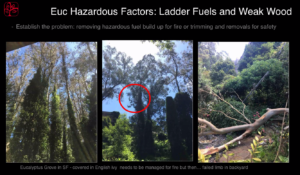
Part of the eucalyptus risk is that vegetation, such as vines, grows up those trees and can carry wildfire into the more flammable canopy, which is why clearing underbrush and spacing is important.
Normally, you’d begin a project by having expert opinion ratify the statement of need and the cost/benefit of various solutions. It might still make sense to have CalFire endorse and/or prioritize the various eucalyptus stands for removal. But I suspect they all need to go, and by “go” I mean removal, not just fuel reduction. There will be concerns over soil erosion, because those tree roots help hold sloped soils in place, and with the combination of drought and atmospheric rivers we face in this Climate Crisis, we have to worry about mudslides – as Californians have for decades.
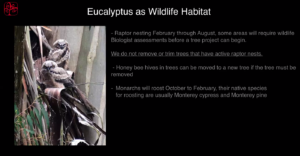
There will also be environmental concerns for species such as raptors and monarch butterflies, but keep in mind eucalyptus is NOT a native species, and – for example – the natural habitats for those butterflies are Monterey Cypress and Pine.
So a full solution must include habitat restoration, as well as removal, protecting the soil and the wildlife.
So who needs to do what?
First, we need to agree who is going to oversee this effort. I’m going to suggest the MCC take the lead here. I realize it will be more work for a group of unpaid public servants, but as you will see, the removal process involves way too many actors to manage itself, and we need a central point of both communications and oversight. I can think of no other agency who will own the full scope of this issue.
Second, we need to document the scope of the problem, and I suggest that begins with the community listing all the eucalyptus locations, as I’ve attempted above. I’d recommend the MCC provide guidance on how to submit eucalyptus location concerns to them.
Third, one would normally prioritize which locations should be treated. However, with multiple agencies and an obvious risk given our recent wildfire history, I’m going to suggest that the community engage immediately with EVERY agency involved to get them moving, and that the only prioritization needed is WITHIN an agency if that body has more eucalyptus locations than it can handle.
Fourth, each agency involved needs to develop a task list of the steps required to resolve the eucalyptus problem, and then expand that task list into a Plan by adding the resources required, costs, and a timeline.
Finally, in my view the MCC needs to audit and oversee that we have: defined the scope of the problem, identified the agency for each location, engaged each agency and agreed the need, and finally oversee that the relevant agency is: producing the task lists, defining the plans, executing the plans, and communicating progress (or lack thereof) to the community.
Based on the locations cited above, it would appear CalTrans, Cabrillo Unified School District, GGNRA, and SMC Parks all have a responsibility here, and there may be more agencies involved.
GGNRA:
They undertook fuel reduction in Rancho Corral de Tierra a couple of years ago, on the borders of Montara. They did not address eucalyptus AFAICT. Dan Haggerty of the MCC has hiked those hills and found photos posted of two tree removal efforts [C -photos below]. Further, there’s web evidence that GGNRA is working now on fire and fuels reduction at Rancho Corral de Tierra in Montara and El Granada. “Non-native pine, eucalyptus, cypress, cotoneasters, and broom near the park boundary and adjacent to residential communities will be removed.” A fuller description of the effort is here: GGNRA Fuel Reduction Efforts The issue with GGNRA will be the adequacy of their efforts compared to the risk, and whether environmental concerns are addressed, but the timing and initiative seem appropriate. I suggest that the MCC have GGNRA present its plans to the community, have CalFire assess the adequacy of those plans, and then audit for accomplishment.
Quarry Park:
As we have seen in their prior fuel reduction efforts, SMC Parks is well aware of concerns at Quarry Park related to ingress/egress and fuel reduction. They completed a 100 acre fuel reduction project in 2019, and are open to further efforts. Both Ms. LeGros and Mr. Calderon pointed out that eucalyptus regrows very aggressively if you clear cut it. You need to either grind out the stumps (and that is not desirable on slopes where erosion is a concern), or you need to cover the stumps with plastic bags to prevent regrowth, or you need herbicides to kill the tree. Eucalyptus stumps and roots have a Will To Live we will need to overcome, and we will need a habitat restoration plan to prevent regrowth.
However, the MCC needs to get Horsley to ratify the need for further work, to which he has agreed in principle. My suggestion is that residents and CalFire speak immediately to what further work needs to be done. Mr. Calderon mentioned that the longer term solution will require a habitat restoration plan with native species (?chapparall, pine, oak, cypress?). Further, a program of public engagement will be required to prevent ‘aesthetic shock’ over the resulting landscape change. He is aware of the wildlife issue, but also pointed out that eucalyptus are invasive, not native, species and not the natural home for those butterflies. With the ‘need defined’, as in fuel reduction vs. removal and restoration, the MCC needs to work with Parks Dept. on a clearly defined project/solution. As I understand the process, Parks and the MCC need the Board of Supervisors to agree on the priority, then go back to Parks to develop a plan & budgeted amount, back again to the County Board of Supervisors to get grants/funding, and then do the work and audit the results. Bottom line, this is a multi-year project, so we need to get started NOW.
Medians/Plazas through El Granada:
Over the years there has been confusion regarding the Alhambra road right of way and medians as to whether GCSD, the County Dept. of Public Works, and/or private property owners are responsible for that vegetation. I’m not a lawyer, but it appears that in 2017, GCSD obtained a 20 year permit so they could make recreational improvements on those medians, and would be responsible for tree maintenance in areas where they had made changes. However, those improvements received strong community opposition, and I don’t believe they were done. GCSD has turned its attention to other projects. Thus, I expect the responsibility remains with the County. The SMC Resource Conservation District (RCD) is working with the MCC and other agencies to address issues around fire risk mitigation in El Granada. I believe Kellyx Nelson of that organization is speaking at the MCC meeting on October 14th. Check the MCC website for future agendas.
There seems to be general agreement that eucalyptus is a major risk and deserves priority, although the specific plans for all risk locations are unclear. I saw a copy of an e-mail from Supervisor Horsley that reads in part as follows: “Yes, I do support removing Eucalyptus trees and the County will be working with the RCD to obtain a programmatic exemption to streamline the process to remove eucalyptus trees”.
I could tell some funny stories from my business career, but the Will To Manage is going to be essential in our Will To Live (here in the Mid-Coast, at least). One old saying is that there are three types of people:
People who make things happen.
People who watch things happen, and
People who wonder what happened.
Without a visible process, visible progress, and someone overseeing both, we’ll be left to wonder what went wrong as our homes burn and people are trapped in an evacuation situation worse than Paradise (which had 5 roads). All we need is The Will To Manage…
FOOTNOTES:
[A]
Insurance-related issues and sources:
1. Cancellations
https://www.nytimes.com/2019/12/05/climate/california-fire-insurance-climate.html
2. Loss Ratios
For every $1 insurers collected in premiums from Californians in 2018, they paid $1.70 in claims, according to data collected by the Department of Insurance.
A majority of the 15 largest insurance companies lost money in 2018 on homeowners insurance in California. A loss ratio below 100 percent means an insurer made money, above 100 means it lost money. At the same time, insurers are facing rate hikes from their own carriers, known as re-insurers. That puts further pressure on them to reduce the amount of coverage they sell in fire zones, industry officials say.
3. Insurers are looking at their book of business and try to reduce risk with a special target on areas that classify as high fire risk but many other factors get added to the mix by insurers i.e. proximity to fire station, hydrant, clearance around the property.
4. Triggers for insurance concerns:
– Devastating wildfires
– Specific for the Coastside – revised fire hazard maps – the 2018 Fire Threat Map from the CA Public Utilities Commission indicates that the entire Midcoast is either in or surrounded by an extreme or elevated wildfire threat area.
The San Mateo County Coast is surrounded by Tier 2 (Elevated) and Tier 3 (Extreme) Fire Threat areas. http://cpuc_firemap2.sig-gis.com/#
[B] Carbon sequestration
Rattan Lal
http://rstb.royalsocietypublishing.org/content/363/1492/815.full.html#related-urls
Phil. Trans. R. Soc. B (2008) 363, 815–830
doi:10.1098/rstb.2007.2185
Published online 30 August 2007
[C] Photos of GGNRA fire reduction maps posted on trails:
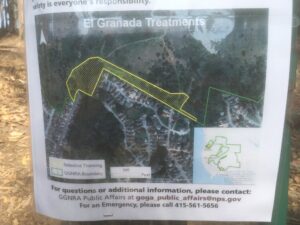
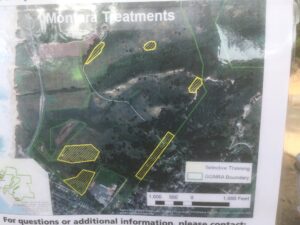
More From Gregg Dieguez ~ “InPerspective”
Mr. Dieguez is a semi-successful, semi-retired MIT entrepreneur who causes occasional controversy on the Coastside, and is now a candidate for the MCC. He lives in Montara. He loves to respond to comments.




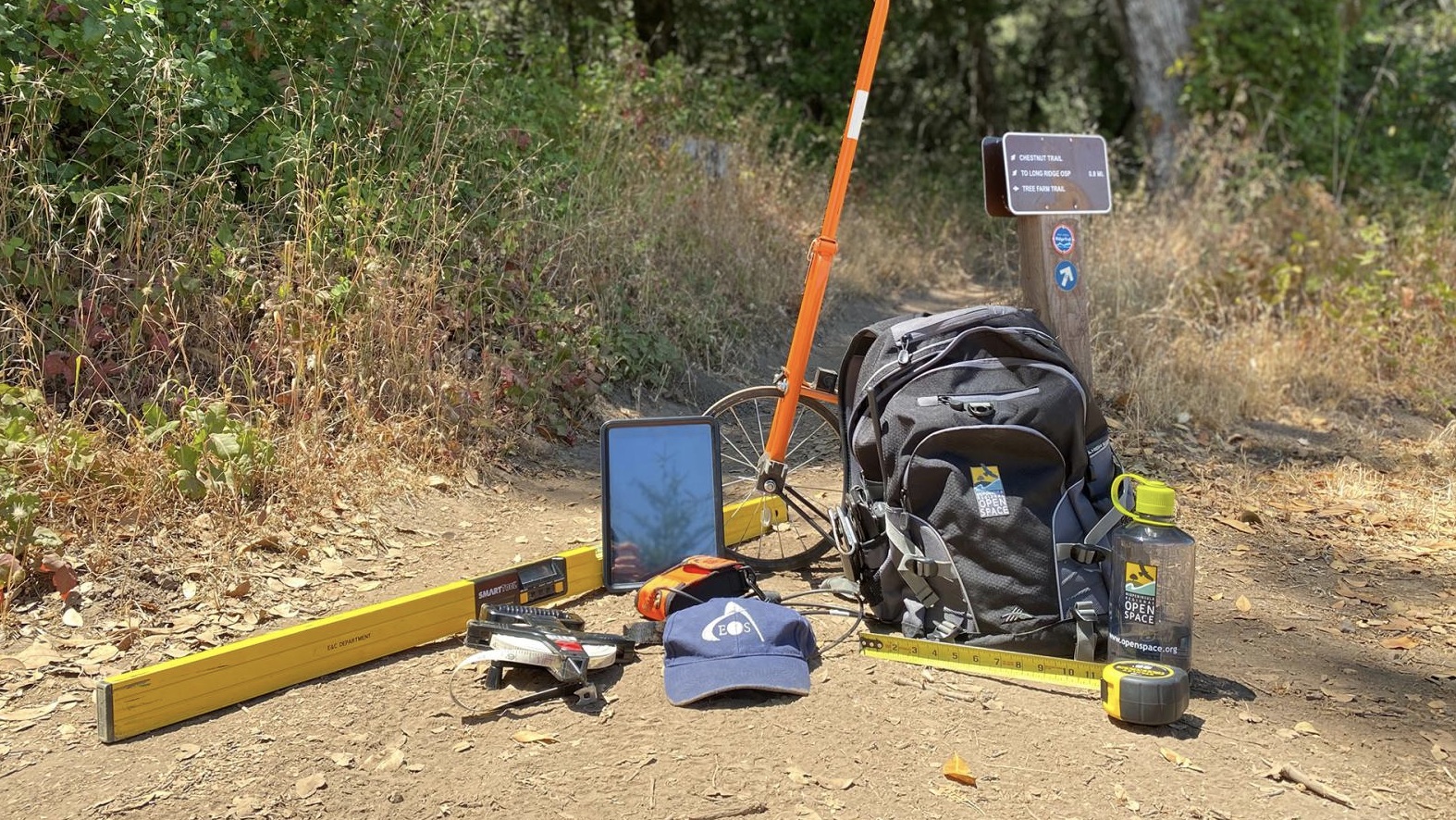
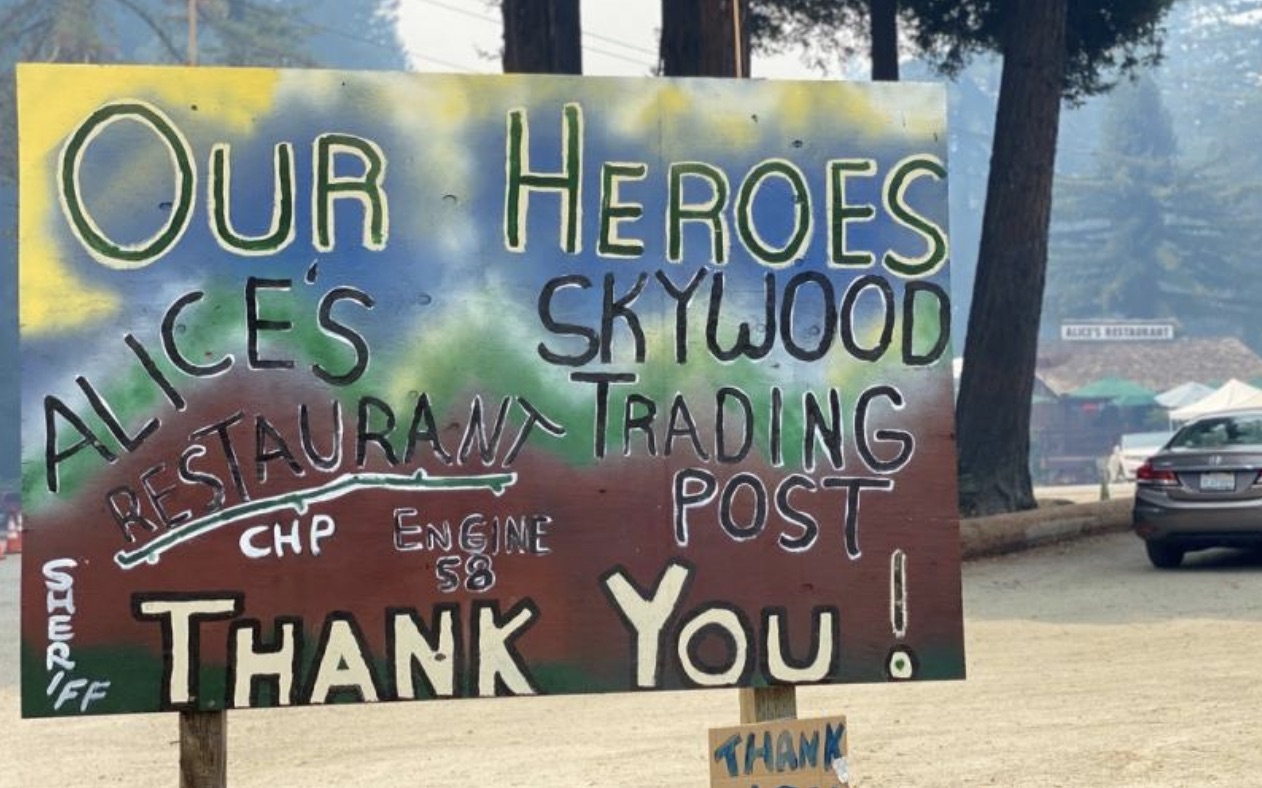
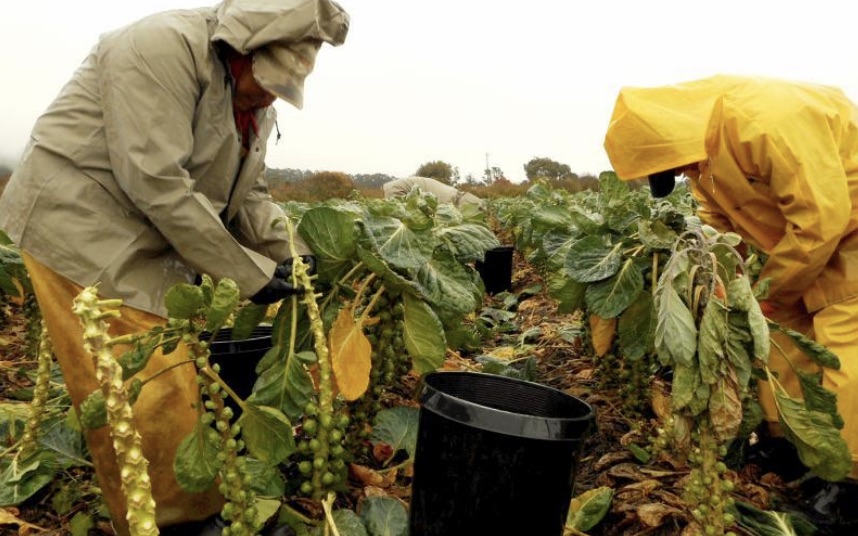
exploding and damaging homes? falling down and damaging homes? Where? The trees are along roads and in parks and forests. What “our exit road”? I know of 3 and more ways to drive: North, South, and East (with more than one East road). Sure, some of them take you longer to leave the Coastside, but we can hardly be blocked off from the rest of the “world”. It is more likely a half day delay until a team clears a fallen tree off the road.